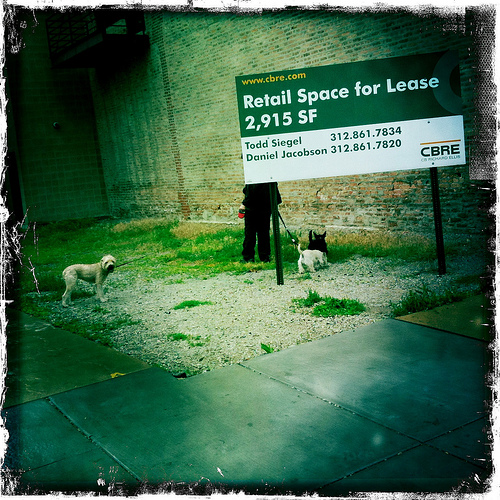 Business bankruptcy skills, continued.
Business bankruptcy skills, continued.
The business lease often stands at the center of the troubles of a struggling business. Ask the right questions, or better yet, read the document yourself, and you can outline choices for your client.
There’s no straight line through this topic, so let’s head off.
Who is lessee?
Even when the business is operated by a corporation, the lessee on the premises lease is often the individual shareholder.
Sometimes it is a relic of operations prior to incorporation; other times it reflects the unwillingness of the landlord to lease to a thinly capitalized corporation.
Either way, your starting point must be to know who owns the lease.
Property of lessee’s estate
Remember that the lease comes into the bankruptcy estate of the lessee.
In Chapter 7, the trustee can assume the lease and assign it, for money, to a third party. Section 365. Trustees find a market for leases when the rate is below market or the space is built out in a desireable fashion.
I find in the code no right or power on the part of the debtor to assume a lease. If the trustee does not intend to assume and assign, the debtor’s ability to remain in the property is dependent on reaching an accord with the landlord.
Lessee in 13
If the lessee is an individual and continued operations are contemplated, Chapter 13 gives the individual the power to assume the premise lease. Contrast that with Chapter 7.
Watch the deadlines in 365 carefully and bring your motion to assume timely. Once the deadline passes without a motion to assume, the lease is rejected as a matter of law.
Prepetition rent defaults
What comes into the bankruptcy estate is no more than the rights the debtor-tenant had at filing. Know your state law about the effect of payment defaults and failure to cure after notice.
Wait too long and you may find that the lease is terminated by operation of law even before the unlawful detainer action is commenced.
If the lease is important and appropriate to future operations, time the filing to preserve rights under the lease.
Bailing
Don’t overlook the fact that a bankruptcy case may free the debtor-lessee from a lease that is no longer advantageous. I have seen many cases where all the business needed to get out from under the red ink was cheaper digs.
These issues play out in a myriad of ways depending on who are the players and what are their goals . Let the analysis begin!
Image courtesy of swanksalot.








Assumption of lease in a Chapter 13 can be easily accomplished by having a plan provision to that effect. This saves the debtor the time and effort of a separate motion. Upon confirmation the lease is assumed if the plan so provides. Some form plans actually read that all leases shall be deemed assumed unless specified to have been rejected. Local practice can vary extensively. One of the biggest problems not addressed in the article is what happens when the lease expires and the lessor is unwilling to renew. Many business Chapter 13 and Chapter 11 plans have gone down in flames as a result.
I think local practice varies on whether a plan provision is sufficient to assume a lease. My practice is to bring a motion, so there is no doubt that the debtor is protected. Like so many Chapter 13 things, your mileage may vary.